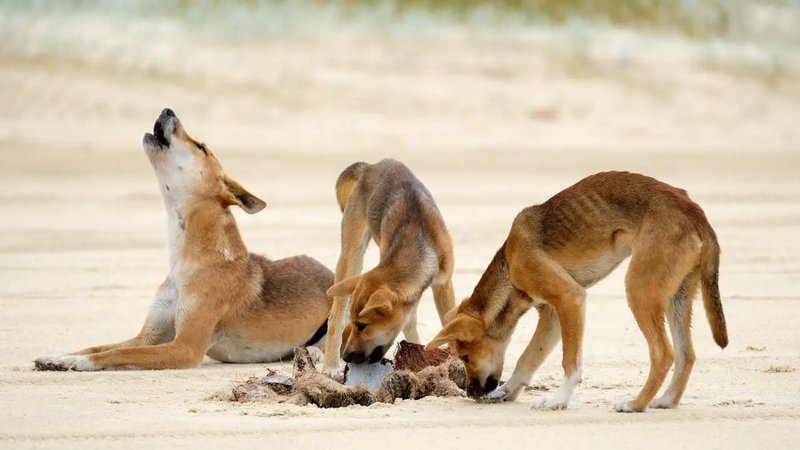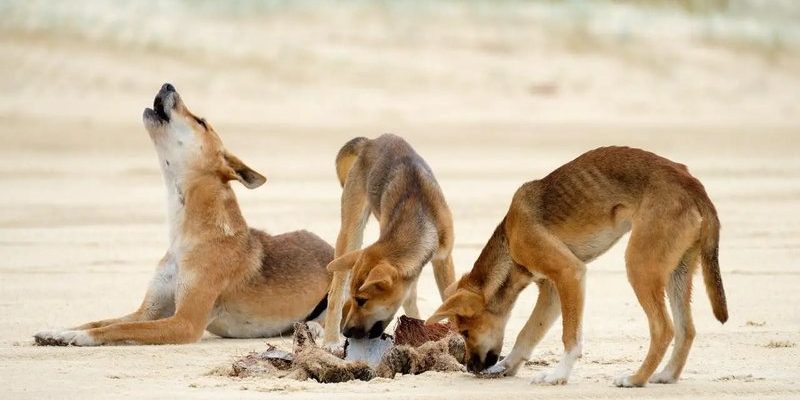
Dingoes are resourceful hunters, and their diet reflects that adaptability. They’re skilled at using their environment to find food, whether it’s chasing down a kangaroo or munching on berries. Just like a human would choose a restaurant based on what’s available, dingoes choose their meals based on what nature provides. In this article, we’ll explore what dingoes eat, how they hunt, and the strategies they use to ensure they get their next meal.
Understanding the Dingo’s Diet
Dingoes are classified as carnivores, but their diet can be surprisingly varied. While they primarily hunt for meat, they are also opportunistic feeders. This means they don’t shy away from eating fruits, nuts, and even scavenging when food is scarce. Here’s a closer look at what makes up their diet:
- Meat: The core of a dingo’s diet includes a range of animals. They typically hunt small to medium-sized mammals, like rabbits, wallabies, and even kangaroos.
- Fruits and Vegetables: Dingoes will often eat fruits such as berries and, when available, they might munch on roots and tubers. They’ve been known to forage for wild plants, especially during fruiting seasons.
- Scavenging: If hunting isn’t successful, dingoes will scavenge carcasses left by other predators. This behavior ensures they don’t go hungry when prey is hard to find.
While dingoes primarily rely on meat, their flexibility allows them to adapt to different environments and seasons. For example, during dry periods when prey is scarce, they rely more on plant matter. It’s all about survival, and dingoes have mastered the art of making the best out of what’s around them.
Hunting Techniques: Teamwork Makes the Dream Work
One of the most interesting aspects of dingo hunting is their social structure. Dingoes often hunt in packs, which allows them to tackle larger prey. Think of it like a group of friends team up for an adventure—they can accomplish more together than alone. Here’s how they do it:
- Pack Hunting: When hunting in groups, dingoes coordinate their efforts. They’ll spread out to encircle their prey, making it difficult for the animal to escape. This teamwork increases their chances of a successful hunt.
- Stalking and Ambush: Dingoes are stealthy. They often use cover to approach their prey quietly before launching a surprise attack. You might say they’re the ninjas of the animal kingdom!
- Solo Hunting: While pack hunting is common, dingoes can also hunt alone. They may target smaller animals like rodents or birds, relying on their keen senses to locate their prey.
The combination of teamwork and individual skill makes dingoes formidable hunters. Watching them in action is like witnessing a well-rehearsed performance, where every dingo knows its role.
Adaptability: The Key to Survival
Adaptability is a hallmark of the dingo’s success. They’re great at reading their environment and adjusting their hunting strategies accordingly. For example, in areas with plentiful kangaroos, dingoes are more likely to focus their efforts there. But when food options are limited, they won’t hesitate to broaden their diet.
Here are a few ways dingoes exhibit adaptability in their hunting:
- Seasonal Changes: Dingoes modify their hunting strategies based on seasonal food availability. In spring and summer, they may find more fruits, while winter may push them to rely on hunting.
- Urban Encroachment: In some areas, dingoes have learned to navigate human environments. They might raid rubbish bins or forage in parks, showcasing their ability to adapt to changing landscapes.
- Learning from Experience: Young dingoes learn from older pack members, picking up hunting techniques and understanding their environment better over time.
This adaptability not only helps dingoes survive but thrive in diverse habitats across Australia. Think of it as being resourceful; they make do with what they have and continuously learn from their surroundings.
Impact of Human Activities
As dingoes navigate their wild world, it’s important to recognize how human activities affect their hunting and diet. Urban development, agriculture, and introduced species can disrupt their natural behaviors and food sources. Here’s how:
- Habitat Loss: Urban development leads to loss of natural habitats, leaving dingoes with fewer places to hunt. This can force them to venture into populated areas, leading to human-wildlife conflicts.
- Competition with Domestic Animals: Dingoes often compete with domestic dogs for food. In some regions, feral cats also pose a threat, outcompeting dingoes for smaller prey.
- Road Accidents: As dingoes wander into human settlements, they face dangers from vehicles. This can significantly reduce their populations in certain areas.
While dingoes are adaptable, they face many challenges due to human activities. Conservation efforts are essential to ensure they can continue to hunt and thrive in their natural habitats.
The Role of Dingoes in the Ecosystem
Dingoes are more than just wild dogs; they play a crucial role in the Australian ecosystem. As apex predators, they help maintain the balance of nature. Here’s why their presence is important:
- Controlling Prey Populations: By hunting herbivores like kangaroos and rabbits, dingoes help prevent overgrazing. This, in turn, supports the health of the vegetation and overall ecosystem.
- Enhancing Biodiversity: By keeping prey populations in check, dingoes help promote a diverse range of plant and animal species. Fewer herbivores mean more chance for plants to flourish, which supports various other species.
- Scavenging Opportunities: Dingoes often leave behind scraps after feeding. This can benefit other animals, like birds and smaller carnivores, creating a varied food web.
In short, dingoes are not just hunters—they are key players in maintaining the health of their environment. Their presence is vital for the ecosystem’s balance.
The diet and hunting strategies of the dingo reveal a remarkable creature that is perfectly adapted to its surroundings. From their varied diet that includes both meat and fruit to their clever hunting tactics, these wild dogs showcase resilience and adaptability.
As we continue to learn more about dingoes, it’s crucial to appreciate their role in the ecosystem and the challenges they face due to human activities. By understanding their behavior and needs, we can help ensure that these fascinating animals remain a part of the Australian landscape for generations to come. After all, the survival of the dingo is not just about the wild dog itself, but also about maintaining a balanced ecosystem that benefits all species, including us.

